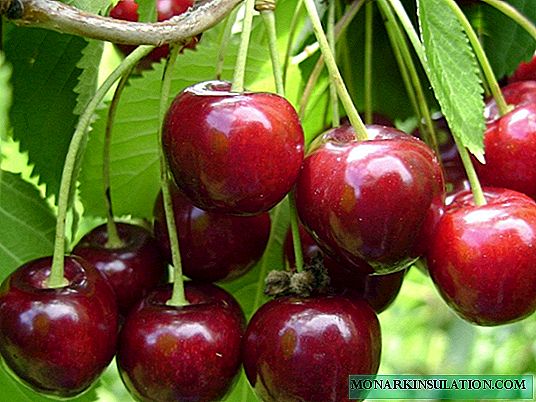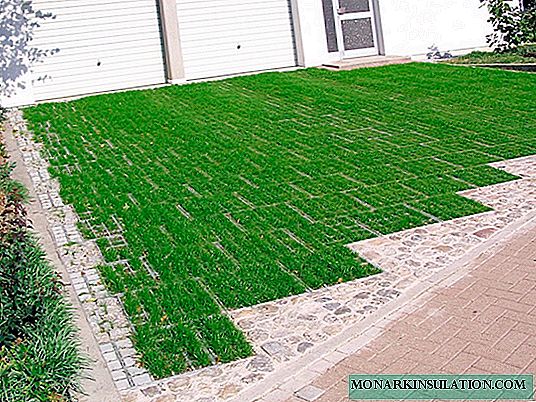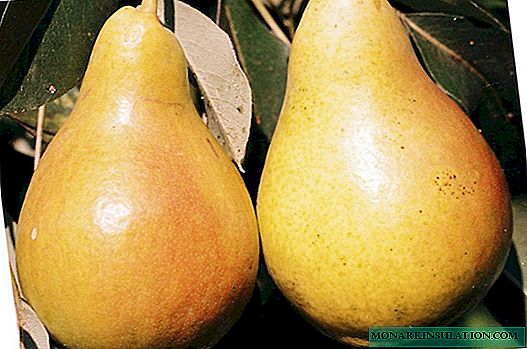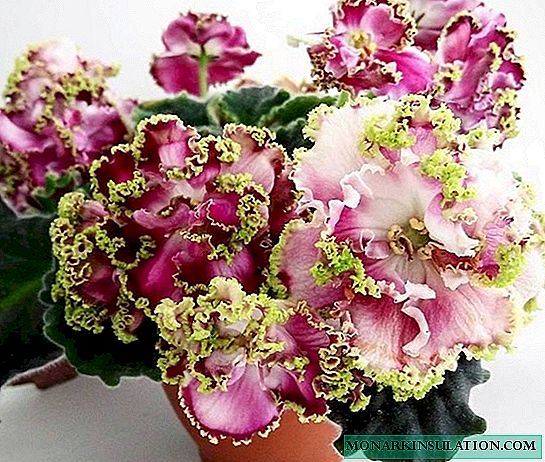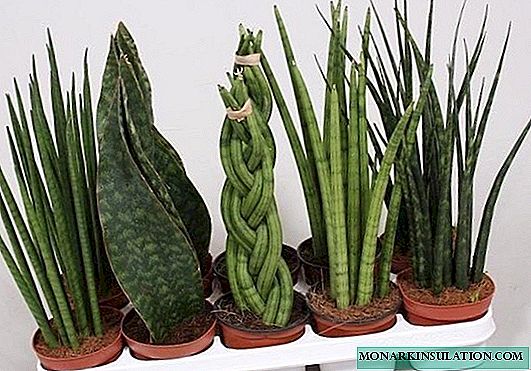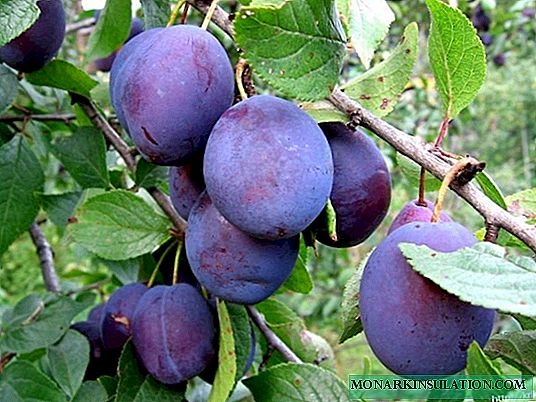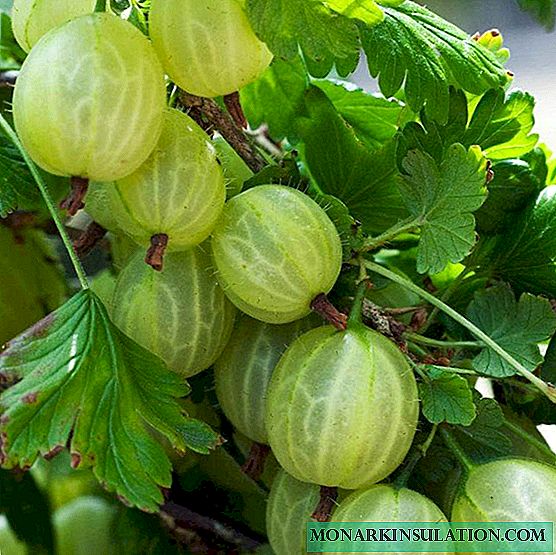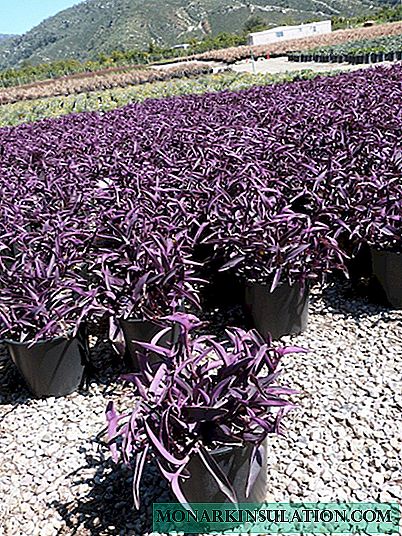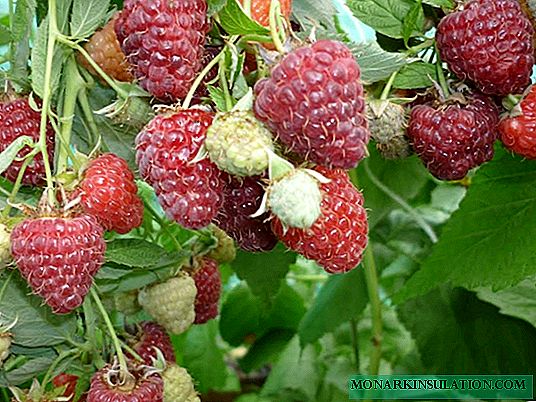
Raspberry Firebird attracts with productivity, beauty of berries and their taste. This repairing variety is grown in all regions of the Russian Federation. However, shoots in the south during the heat of the shoots occur, in the north 30% of the summer-autumn crop does not ripen, but in central Russia raspberries grow without any problems and are found in industrial plantings. Gardeners of any region who have grown and seen the Firebird at the time of fruiting do not dare to remove it, on the contrary, they are ready to create the conditions necessary for this variety.
Raspberry Story Firebird
Like many repairing forms of domestic selection, this variety was developed by the famous Russian scientist Ivan Vasilievich Kazakov. He headed the Kokinsky stronghold in the Bryansk region, which is part of the All-Russian selection and technological institute of gardening and nursery farming (Moscow). In 2007, the specialists of this institution applied for the registration of the Firebird in the State Register of Breeding Achievements. A year later, raspberries received the approval of the commission and the status of an officially recognized variety recommended for cultivation in all regions of the Russian Federation.

The author of the Firebird variety, the famous breeder I.V. Kazakov
Repair raspberries differ from the usual ability to bloom and bear fruit on annual shoots. Previously, it was believed that such varieties should produce two crops during the summer: the first - on overwintered shoots and the second - on the young of the current year. However, now more and more gardeners are coming to the decision to grow such raspberries for the sake of one autumn crop. The same trend is supported by breeders.
Grade description
There was a stereotype that repair raspberries lacked taste and aroma, they are inferior in this to ordinary varieties. It was worth creating a firebird just to destroy an established opinion. The berries of this variety are not only large and beautiful, but also sweet with a pleasant acidity and a delicate raspberry aroma. The weight of each fruit is 4-6 g, the color is bright red, the shape is conical.
Video: raspberry presentation Firebird
Drupe small, tightly connected. The berries do not crumble and crumple, they are dense, but juicy, suitable for machine assembly, transportation and short-term storage - up to 3 days in the refrigerator.

Raspberries Firebird large and dense, well kept in shape
Late variety, ripening begins in the second half of August. The bush grows tall - up to 2 m, support is needed. Only 5-7 shoots of substitution grow, that is, you are freed from the fight against shoots. Everything that grows out of the earth will not be superfluous, but will bring a harvest. However, this plus turns into a minus when raspberries need to be propagated.
One of the features of the repair form is that the shoots branch, that is, from the ground to the top are covered with fruit twigs. Therefore, unlike ordinary varieties, they bear fruit not only on the tops, but also throughout the stem. The productivity of the Firebird is 2.5 kg per bush, with industrial cultivation - 1.3 t / ha. Experts of the State Budgetary Institution "State Sorting Commission" who tested this variety recommend the technology of one-year cultivation, that is, in autumn all shoots must be mowed and the crop must be obtained from annual replacement shoots.

The shoots of the Firebird are high, covered with fruit twigs along the entire length
Already several gardeners have unsubscribed on forums about the poor heat resistance of this raspberry. At temperatures above +30 ⁰C the leaves, and after them the shoots completely dry out. And in the regions where autumn frosts come early, this variety does not have time to give 30% of the harvest.
Studying information about this wonderful variety, I ran into a contradiction. According to information from the State Register, it is late, but the whole of Russia is listed in the admission regions. Meanwhile, there is information that, in my opinion, is more logical: without any problems, the Firebird grows only in the Central and Central Black Earth regions. Given the varietal characteristics and relying on the feedback of gardeners, I would not recommend growing it in the south or north of the country.
Advantages and disadvantages of the Firebird-table variety
| Benefits | disadvantages |
| Removant, fruiting on annual shoots | Late ripening, not in all regions manages to give the crop to frost |
| Gives little growth | It does not tolerate heat: berries are smaller, shoots are possible |
| Autumn mowing eliminates the fight against diseases and pests, you do not need to bend anything to the ground for the winter | Need to build trellises |
| The berries are large, tasty, fragrant, transportable, universal. | It is difficult to propagate, so seedlings are difficult to get |
| High yield |
Raspberry planting Firebird
Raspberries can be planted in spring and autumn. During the spring planting, the Firebird will present you with a crop already in the current season. The layout of the seedlings depends on your choice: grow free-standing bushes or a continuous wall of raspberries.
Planting patterns, depending on the method of forming raspberries:
- bush method: 1.5 m between bushes in a row and 2.5 m between rows;
- tape (trench): 50-70 cm in a row, 2.5 m - between rows.
For ribbon cultivation in subsequent years, form a raspberry growing so that on each running meter there are 8-10 shoots, that is, every 10-12 cm.

Traditionally, raspberries are grown in a tape method, but if there are few seedlings, or a variety is tested, use a bush planting method
Choose a place for raspberries sunny and covered with a solid fence or building from the north winds. For better illumination, arrange rows from south to north. When planting holes or trenches at the bottom of each bush, make: 1/3 of a humus bucket, 1 glass of ash or 1 tbsp. l superphosphate and potassium sulfate. Mix the components, make a layer of plain earth from the area above them and plant raspberries. Deepening the root neck is not recommended. Water well and cover the mulch planting.
Video: Raspberry planting in spring
How to grow remont raspberries
Immediately after planting, place drip irrigation in the raspberry. If this is not possible, water once a week from a hose or bucket, soaking the soil to a depth of 30-40 cm. To protect the bushes on hot days (above +30 ⁰C), keep the sprinkler system or nozzle spraying water on the leaves ready. It will lower the temperature and save the Firebird from death. However, not only leaves, but also roots suffer from high temperatures, so the value of mulch, especially in the southern regions, is very high for this variety. A layer of plant debris will help keep the soil beneath it not only loose and moist, but also cool. Use straw, hay, humus, compost, peat.

Mulch protects roots in winter from freezing, in summer from overheating
When growing Firebirds in regions with short and rainy summers, immediately after the snow has melted, cover the rows of raspberries with a spunbond or agrofibre. So you will extend the growing season and accelerate the ripening of the crop by 1-2 weeks, and if you stretch the film over the non-woven material, then by 2-3 weeks. The rest of the care differs little from the classic for repairing forms. It includes: garter to trellises, top dressing, mowing shoots and sheltering roots for the winter.

To get an early and full harvest of raspberries, it is grown even in greenhouses
Raspberry Supports
With bush cultivation, even during planting, set a stake in the center of the bush, tie the shoots to it. For raspberries, growing a solid wall, build a trellis. Drive in the posts at the beginning and at the end of the row, pull a wire between them: the first 50 cm from the ground, the next 50 cm from the previous one. For the Firebird, three levels of wire are sufficient. Fasten shoots to the trellis using special plastic clamps. Today they are sold in gardening stores.
Video: raspberries trellis from metal pipes
Top dressing
In the spring, as soon as the ground thaws, young shoots will begin to appear, give the first fertilizing with nitrogen-containing fertilizers. It could be:
- ammonium nitrate or urea (urea) - 1 tbsp. l on 10 l of water;
- infusion of mullein or horse manure (1:10 with water);
- infusion of bird droppings (1:20);
- humus, compost or litter from the house containing litter - 1 bucket under a bush or per meter.
Let's give any top dressing on damp earth. Liquid spend 5-7 liters per bush or 10 liters per linear meter. Humus and other organics can simply mulch the earth; these materials themselves will gradually decay and go to the roots with rain and watering.

At the beginning of the growing season, raspberries need nitrogen fertilizers, the most affordable of them is urea (urea)
The second feeding is needed when the shoots reach their length, and buds appear on the branches. At this time, apply a complex fertilizer containing phosphorus, potassium and trace elements. Nitrogen in the second half of the summer do not contribute! Good fit:
- ash - 0.5 l under the bush, dust the ground, loosen and pour:
- ready-made mixes from the store for berry crops - Fertika, Agricola, Agrovita, Clean sheet, etc.
Check the composition of the purchased mixtures: they should not contain nitrogen, or it should be contained in a smaller amount than phosphorus and potassium.

When buying fertilizer for feeding during budding and flowering, check: are there any trace elements in the composition, what is the proportion of nitrogen
In autumn, when the leaves dry out and the earth begins to freeze, do along the rows or around the bushes, departing from them 50 cm, grooves 10-15 cm deep. Evenly scatter 1 tbsp. l superphosphate and potassium sulfate per bush or 1.5 tbsp. l per linear meter.

In the fall, phosphorus-potash fertilizers are traditionally applied
Mowing shoots and preparing raspberries for winter
With the advent of cold weather, when the harvest is over, cut off all the shoots on the ground. Tear out weeds, rake leaves. Burn these plant debris or take it away. Cover the ground with the roots that remain in it with a mulch layer of at least 10 cm. In regions with frosty and low snowy winters, you can additionally cover it with agrofiber and scribble branches for snow retention.
Video: Autumn pruning of remont raspberries
Harvesting and processing
The harvesting period of the Firebird lasts more than a month. Due to the late ripening period, only in the southern regions and in the years with a warm autumn, it is possible to collect 90% of the crop. Shoots with the last berries usually fall under frost and snow. Therefore, pick raspberries on time, every 1-2 days. The sooner you remove the ripened berries from the bushes, the faster the others will grow and sing.

Collecting ripe berries in time, you stimulate the growth and maturation of the remaining
The fruits of the Firebird retain their shape well, so they can be frozen and dried. Of course, from this raspberry jam, jams, compotes are cooked. But the main purpose is fresh consumption. Raspberries contain vitamins C, B, A, organic acids, pectins, tannins, alcohols and anthocyanin.
Gardeners reviews
Heat Bird (Season 1). The taste is great. We must look further. In the wind, prickly shoots spoil the berries (they are big!). As noted, he also needs a long warm autumn.
Elvir//club.wcb.ru/lofiversion/index.php?t2711.html
Firebird - My most fruitful variety. Powerful shoots, highly leafy, the berry is delicious, with some special, raspberry-colored spirit. In the market - out of competition.
todos//club.wcb.ru/lofiversion/index.php?t2711.html
Alas, my Firebird in the conditions of the northern Azov Sea (Taganrog), almost all burned out. After the autumn planting, they moved well in the spring in growth and some shoots were up to a meter. But all summer the temperature was over 30 and gradually, despite watering and mulching, the leaves began to curl from the heat and the stems dried out.
NIK-olay//forum.vinograd.info/showthread.php?t=4581
Similarly shown in the conditions of Kharkov this hot summer. All moved well, also up to 70cm. rose, and then the heat began. I knew about the tenderness of the variety, so it was like the Firebird made the thickest mulch and special watering. But 1 bush burned out, and 2 survived, I think, thanks to the tall bushes of other varieties of raspberries, shading from the south. Now the bushes are stronger, have grown over a meter, but the color has not been thrown away. Let's look at the next year. I have no doubt about the variety, moreover, the variety is very different. The peculiarity is thin and soft spikes.
antonsherkkkk//forum.vinograd.info/showthread.php?t=4581
In the first place in sugar and juiciness is the Orange Miracle. The second one is definitely the Firebird, which, even with bad weather and rains, remains sweet. In third place is a ruby necklace. And further - Hercules.
Svetkov//forum.prihoz.ru/viewtopic.php?t=5645
That's just nowhere and no one says that the taste of the berries of this variety is HORROR. I do not recommend to anyone. the repairing variety "crane" is growing nearby - a completely different matter. seedlings bought a year ago in the Rusroz nursery (Moscow) - a proven place, I exclude fake.
Observers//www.you tube.com/watch?v=DXLfqJIgkf8&feature=youtu.be
The firebird, like any variety, has positive and negative qualities. Reviews gardeners, as always, are mixed. Whether this raspberry is suitable for your site, you can decide only on your own experience. Its strengths: high yield and dense, tasty berries.

